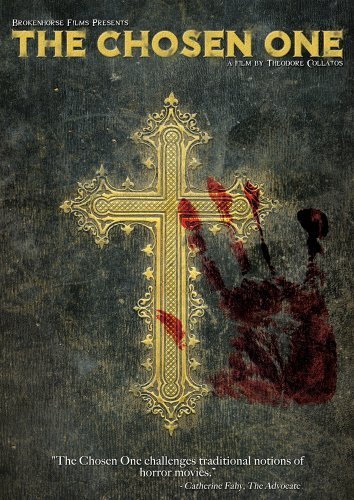|
The Chosen One Film review by Thomas M. Sipos |
|
MENU Books Horror Film Festivals and Awards
Pursuits
Blogs Horror Film Festivals and Awards
Other
|
The Chosen One (2009, dir: Theodore Collatos, cast: Arthur Collins, Carolina Monnerat, Sam Porretta, Irena Martens, Jack Silverman)
The Chosen One is an odd horror-art film. It boasts beautiful black & white photography, and mostly good acting. It's largely original, though similar to Nadja, another artsy, black & white, horror-art film. But whereas Nadja often bores, The Chosen One suffers only a few boring patches. Nadja is more self-consciously artsy, with extended scenes that focus on form, not content. The Chosen One is more engaging, holding our interest because it places greater emphasis on story, albeit a sketchy story. The Chosen One has a nice period feeling, though anachronisms abound. I'm not sure to what extent that's intentional, to what extent accidental. A bit of both, I think. The film starts off looking as if it's set in the second half of the 19th century. But then some men appear in late 1700s clothing, including tricorner hats. There are also contemporary elements -- some furniture, a shirt with modern stitching, basement pipes which suggest indoor plumbing. The mad scientist says "gender" when he means "sex." (In the 1800s "gender" referred to language -- masculine and feminine words -- not to human sexuality.) And I don't think that a prostitute (who speaks with a Cockney accent, though the film is set in America) would say "incredible" when referring to great sex. That usage of the word didn't arise until the 20th century. But some anachronisms are certainly intentional. When the vampire baby is suddenly a grown woman, she dresses in a slinky pants suit, and has modern, short, slicked-back, goth hair. We hear modern music. All this adds to the film's artsy, experimental feel. There are some modern references -- a "Hitchcock Room" and a farm called "Green Acres." Altogether, the film feels like a rough collage. The story has gaps and unexplained incidents, which, along with the anachronisms, creates an impressionistic feel. An emotional portrait of horror icons and vampire tropes, rather than a linear tale. It's an interesting horror-art film, eliciting one's appreciation rather than enjoyment. It's nice to see a low-budget filmmaker experiment, giving the audience something different from the usual horror fare. Review copyright by Thomas M. Sipos
|
"Communist Vampires" and "CommunistVampires.com" trademarks are currently unregistered, but pending registration upon need for protection against improper use. The idea of marketing these terms as a commodity is a protected idea under the Lanham Act. 15 U.S.C. s 1114(1) (1994) (defining a trademark infringement claim when the plaintiff has a registered mark); 15 U.S.C. s 1125(a) (1994) (defining an action for unfair competition in the context of trademark infringement when the plaintiff holds an unregistered mark).


